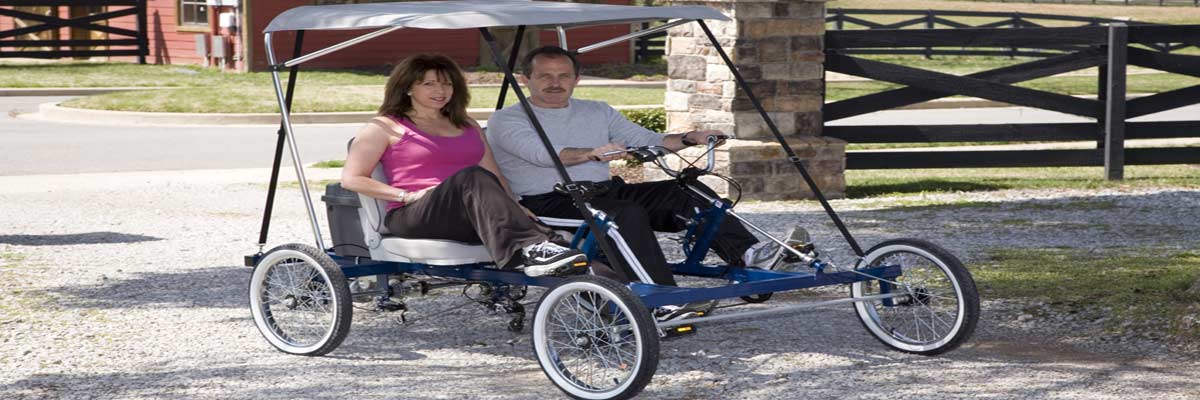The Green Picture: The Lexus Of Human-Powered Bicycles
The Rhoadescar is one of the swankiest human-powered two seaters I’ve seen yet. Especially with the top up to keep the rain/sun out. Granted, you probably won’t fit in the bike lane — and the highway will be a bit of a challenge, but I did it nonetheless.
Author
Recent Posts
- Reducing Environmental Impact: Water-Based vs Solvent-Based Line Marking SolutionsFebruary 24, 2025With my many years of experience in line marking in […]
 The Ultimate Guide to Reducing Water Waste in Your HomeNovember 13, 2024I’m John of Plumb It Right. I have been a […]
The Ultimate Guide to Reducing Water Waste in Your HomeNovember 13, 2024I’m John of Plumb It Right. I have been a […] 7 Ways Homeowners Can Use Landscaping To Boost Their Green CredentialsAugust 14, 2024Some people might think that by simply having […]
7 Ways Homeowners Can Use Landscaping To Boost Their Green CredentialsAugust 14, 2024Some people might think that by simply having […] Water Conservation Strategies Transforming Australian Mine SitesJuly 9, 2024G’day, folks! Pull up a chair and grab a cold […]
Water Conservation Strategies Transforming Australian Mine SitesJuly 9, 2024G’day, folks! Pull up a chair and grab a cold […] The Benefits of Using Biodegradable Dental MaterialsJune 6, 2024Truly dental practices release a lot of waste. Most of […]
The Benefits of Using Biodegradable Dental MaterialsJune 6, 2024Truly dental practices release a lot of waste. Most of […] Fun Themes to Try in Your Landscape DesignMarch 26, 2024If you’ve been thumbing through the pages of a home […]
Fun Themes to Try in Your Landscape DesignMarch 26, 2024If you’ve been thumbing through the pages of a home […] 4 Advantages of Landscape DesignFebruary 18, 2024When your yard is not as functional, beautiful, or […]
4 Advantages of Landscape DesignFebruary 18, 2024When your yard is not as functional, beautiful, or […]
Categories
Tags
Bicycles
Biodiesel
BioFuel
Bobolink
Book Reviews
Business
Climate Change
Composting
Conservation
Dumb Ideas
Eating Local
Education
Energy
Entertainment
Farming
Fashion
Fuel Cells
Gardening
Global Warming
Green Building
Green facts
Green Living
Green Politics
Green Products
Green Sites
How To
Hybrids
Landscape Design
Landscaping
Organic
Peak Oil
Permaculture
pollution
Recycling
Reviews
Simple Living
Solar
Tech Innovations
Transportation
Travel
Urban Farming
Video
Videos
Water
Wind Power
